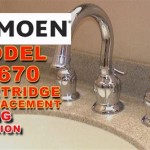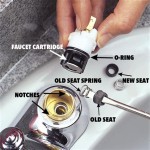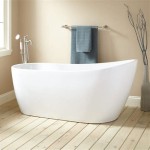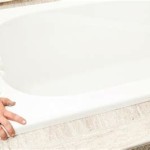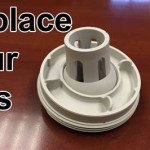Mobile Home Bathtub Surround Replacement: A Comprehensive Guide
Mobile homes often present unique challenges when it comes to renovation and repair. One common area that requires attention is the bathtub surround. A damaged or outdated surround can detract from the overall aesthetic of the bathroom and potentially lead to water damage within the walls. Replacing a mobile home bathtub surround is a manageable project for the reasonably handy homeowner, or a task easily contracted out to a qualified professional. This article provides a detailed overview of the considerations, preparation, and installation process involved in replacing a mobile home bathtub surround.
Bathtub surrounds in mobile homes, like those in traditional homes, serve several important functions. They act as a waterproof barrier, preventing water from seeping into the walls and subfloor. This is crucial, as moisture can lead to mold growth, structural damage, and costly repairs. Surrounds also provide a finished, aesthetically pleasing appearance. Over time, however, surrounds can become cracked, chipped, stained, or simply outdated, necessitating replacement. The materials used in mobile home construction, while often lighter and more cost-effective, may also be more susceptible to damage than those used in traditional homes.
Understanding the specific requirements of mobile home construction is paramount before undertaking any renovation project. This includes understanding the dimensions of the bathroom, the type of plumbing used, and the potential for limitations imposed by the structural design of the mobile home. Ignoring these factors can lead to significant complications during the installation process and potentially compromise the integrity of the home.
Key Considerations Before Starting
Before embarking on a mobile home bathtub surround replacement, several key factors must be addressed. These include assessing the existing surround, selecting the appropriate replacement material, gathering the necessary tools and materials, and preparing the work area. A thorough assessment will inform the selection of materials and ensure a smooth and efficient installation process.
The first step is a careful evaluation of the existing surround. Identify the type of material it is made of (e.g., fiberglass, acrylic, plastic, or tile). Note any areas of damage, such as cracks, chips, or water stains. Determine if the damage is localized or widespread. This assessment will help determine the scope of the project and inform the choice of replacement materials.
Next, consider the type of replacement material. Common options include acrylic, fiberglass, PVC (polyvinyl chloride), and tile. Acrylic is a durable and aesthetically pleasing option, offering good resistance to scratches and stains. Fiberglass is a more budget-friendly option but may be less durable than acrylic. PVC is a lightweight and waterproof material that is easy to install. Tile offers a classic and customizable look but requires more labor-intensive installation and maintenance. Each material has its own advantages and disadvantages in terms of cost, durability, ease of installation, and aesthetic appeal. The selection process should be made after careful consideration of these factors.
Once the material is selected, gather all the necessary tools and materials. This typically includes a utility knife, measuring tape, level, pencil, caulk gun, adhesive, screws, drill, safety glasses, and gloves. The specific tools required may vary depending on the type of surround being installed. Ensure that all tools are in good working order before starting the project.
Finally, prepare the work area. This involves removing any fixtures or accessories that may obstruct the installation process, such as shower curtains, shower rods, and soap dishes. Cover the bathtub with a protective layer to prevent damage during the removal and installation process. Ensure adequate ventilation in the bathroom, as some adhesives and sealants can produce fumes. Taking the time to properly prepare the work area will minimize disruptions and ensure a safer and more efficient installation.
Step-by-Step Installation Process
The installation process involves several distinct stages, including removing the old surround, preparing the wall surface, installing the new surround panels, and sealing the seams. Each step requires careful attention to detail to ensure a professional and long-lasting result. Incorrect installation can lead to water leaks and other problems that can compromise the integrity of the bathroom.
The first step is removing the existing surround. Begin by carefully scoring the caulk around the edges of the surround with a utility knife. This will help to prevent damage to the surrounding walls during removal. Use a pry bar or similar tool to gently detach the surround from the wall. Work slowly and carefully to avoid damaging the wallboard behind the surround. If the surround is glued to the wall, it may be necessary to use a heat gun or solvent to soften the adhesive. Once the surround is detached, remove any remaining adhesive or debris from the wall surface.
Next, prepare the wall surface. Inspect the wallboard for any signs of water damage or mold growth. If any damage is found, repair or replace the affected sections of wallboard before proceeding. Clean the wall surface thoroughly to remove any dust, dirt, or grease. This will ensure that the new surround adheres properly to the wall. Apply a primer to the wall surface to improve adhesion and prevent moisture penetration. Allow the primer to dry completely before proceeding to the next step.
With the walls prepared, begin installing the new surround panels. Measure and cut the panels to fit the dimensions of the bathtub area. Use a level to ensure that the panels are properly aligned. Apply adhesive to the back of the panels according to the manufacturer's instructions. Press the panels firmly against the wall and secure them with screws or nails. Use shims to maintain even spacing between the panels and the bathtub. Allow the adhesive to dry completely before proceeding to the next step.
The final step is sealing the seams. Apply a bead of caulk along all the seams between the panels and the bathtub, as well as along the edges of the surround where it meets the wall. Smooth the caulk with a wet finger or a caulking tool to create a watertight seal. Allow the caulk to dry completely before using the bathtub. Inspect the seams regularly for any signs of cracks or leaks and re-caulk as needed.
Addressing Unique Challenges in Mobile Homes
Replacing a bathtub surround in a mobile home can present unique challenges that are not typically encountered in traditional homes. These challenges often stem from the lightweight construction materials, limited space, and specific plumbing configurations used in mobile homes. Addressing these challenges requires careful planning and adaptation of standard installation techniques.
One common challenge is the limited space in mobile home bathrooms. Bathrooms in mobile homes are often smaller than those in traditional homes, which can make it difficult to maneuver and install the surround panels. Careful measuring and cutting of the panels are essential to ensure a proper fit. It may also be necessary to remove or temporarily relocate fixtures and accessories to create more working space.
Another challenge is the use of lightweight construction materials. Mobile homes often use thinner and less dense wallboard than traditional homes, which can make it more difficult to secure the surround panels. It may be necessary to use specialized screws or anchors to provide adequate support. Avoid over-tightening the screws, as this can damage the wallboard.
Plumbing configurations in mobile homes can also present challenges. The plumbing in mobile homes is often different than that in traditional homes, which can complicate the installation of the surround panels. Be careful to avoid damaging the plumbing when removing the old surround or installing the new one. It may be necessary to modify the surround panels to accommodate the plumbing fixtures.
Furthermore, mobile homes are prone to settling and shifting over time, which can cause cracks and leaks in the bathtub surround. To mitigate this, choose a surround material that is flexible and resistant to cracking. Use a high-quality caulk to seal the seams and inspect them regularly for any signs of damage. Consider using flexible sealant products specifically designed for mobile homes.
Finally, consider the ventilation in the bathroom. Mobile homes often have limited ventilation, which can contribute to moisture buildup and mold growth. Ensure that the bathroom is properly ventilated by installing an exhaust fan or opening a window during and after showers. Regular cleaning and maintenance can also help to prevent mold growth and extend the life of the bathtub surround.
By addressing these unique challenges and adapting standard installation techniques, homeowners can successfully replace a bathtub surround in a mobile home and create a safe, functional, and aesthetically pleasing bathroom.

Replace Or Repair A Mobile Home Bathtub

Mobile Home Bath Tub Shower Installation Bathroom Remodeling

Mobile Home Bathtub With 3 Piece Fiberglass Surround

Mobile Home Bathtub And Shower Repair

Mobile Home Bathtubs And Surrounds Star Supply Usa

Mobile Home Bathtubs For I Replace Jones Service Inc

Create A Waterproof Bathtub Wall For Less Than 50 Walls Small Shower Remodel Mobile Home Bathtubs

3 Remedies For Yellow Bathtubs In Mobile Homes Home Living Redo Bathrooms

How To Remove Tub Surround From Mobile Home

How To Remove Tub Surround From Mobile Home
Related Posts

